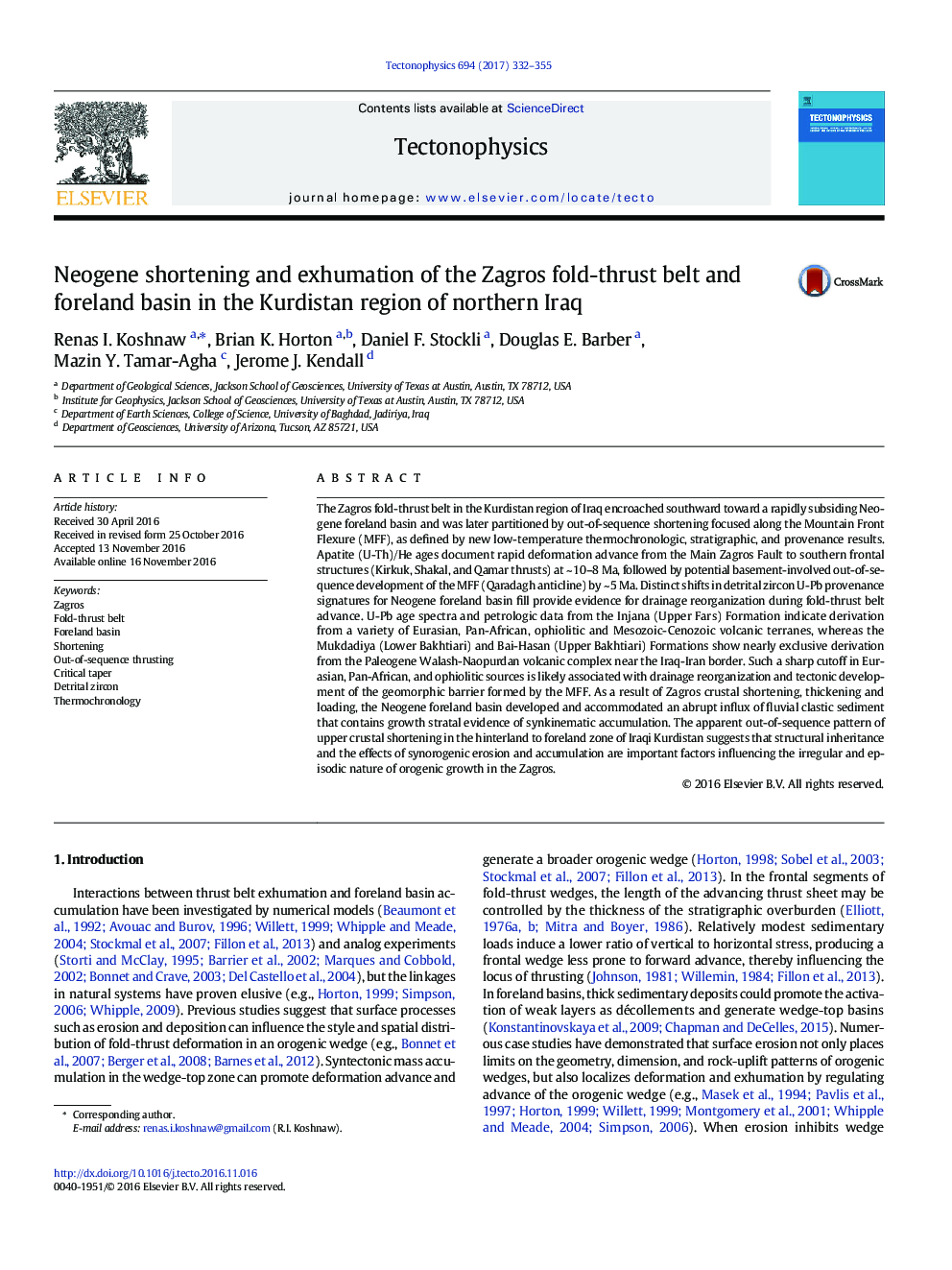| Article ID | Journal | Published Year | Pages | File Type |
|---|---|---|---|---|
| 5781719 | Tectonophysics | 2017 | 24 Pages |
â¢Evolution of NW Zagros fold-thrust belt involved enhanced exhumation during the growth of Mountain Front Flexureâ¢Mechanical stratigraphy, inherited structures, and syntectonic sedimentation were key controls on shortening kinematicsâ¢Zagros fold-thrust belt shortening pattern was largely governed by maintenance of critical taper in the orogenic wedge
The Zagros fold-thrust belt in the Kurdistan region of Iraq encroached southward toward a rapidly subsiding Neogene foreland basin and was later partitioned by out-of-sequence shortening focused along the Mountain Front Flexure (MFF), as defined by new low-temperature thermochronologic, stratigraphic, and provenance results. Apatite (U-Th)/He ages document rapid deformation advance from the Main Zagros Fault to southern frontal structures (Kirkuk, Shakal, and Qamar thrusts) at ~Â 10-8Â Ma, followed by potential basement-involved out-of-sequence development of the MFF (Qaradagh anticline) by ~Â 5Â Ma. Distinct shifts in detrital zircon U-Pb provenance signatures for Neogene foreland basin fill provide evidence for drainage reorganization during fold-thrust belt advance. U-Pb age spectra and petrologic data from the Injana (Upper Fars) Formation indicate derivation from a variety of Eurasian, Pan-African, ophiolitic and Mesozoic-Cenozoic volcanic terranes, whereas the Mukdadiya (Lower Bakhtiari) and Bai-Hasan (Upper Bakhtiari) Formations show nearly exclusive derivation from the Paleogene Walash-Naopurdan volcanic complex near the Iraq-Iran border. Such a sharp cutoff in Eurasian, Pan-African, and ophiolitic sources is likely associated with drainage reorganization and tectonic development of the geomorphic barrier formed by the MFF. As a result of Zagros crustal shortening, thickening and loading, the Neogene foreland basin developed and accommodated an abrupt influx of fluvial clastic sediment that contains growth stratal evidence of synkinematic accumulation. The apparent out-of-sequence pattern of upper crustal shortening in the hinterland to foreland zone of Iraqi Kurdistan suggests that structural inheritance and the effects of synorogenic erosion and accumulation are important factors influencing the irregular and episodic nature of orogenic growth in the Zagros.
Graphical abstractDownload high-res image (232KB)Download full-size image
